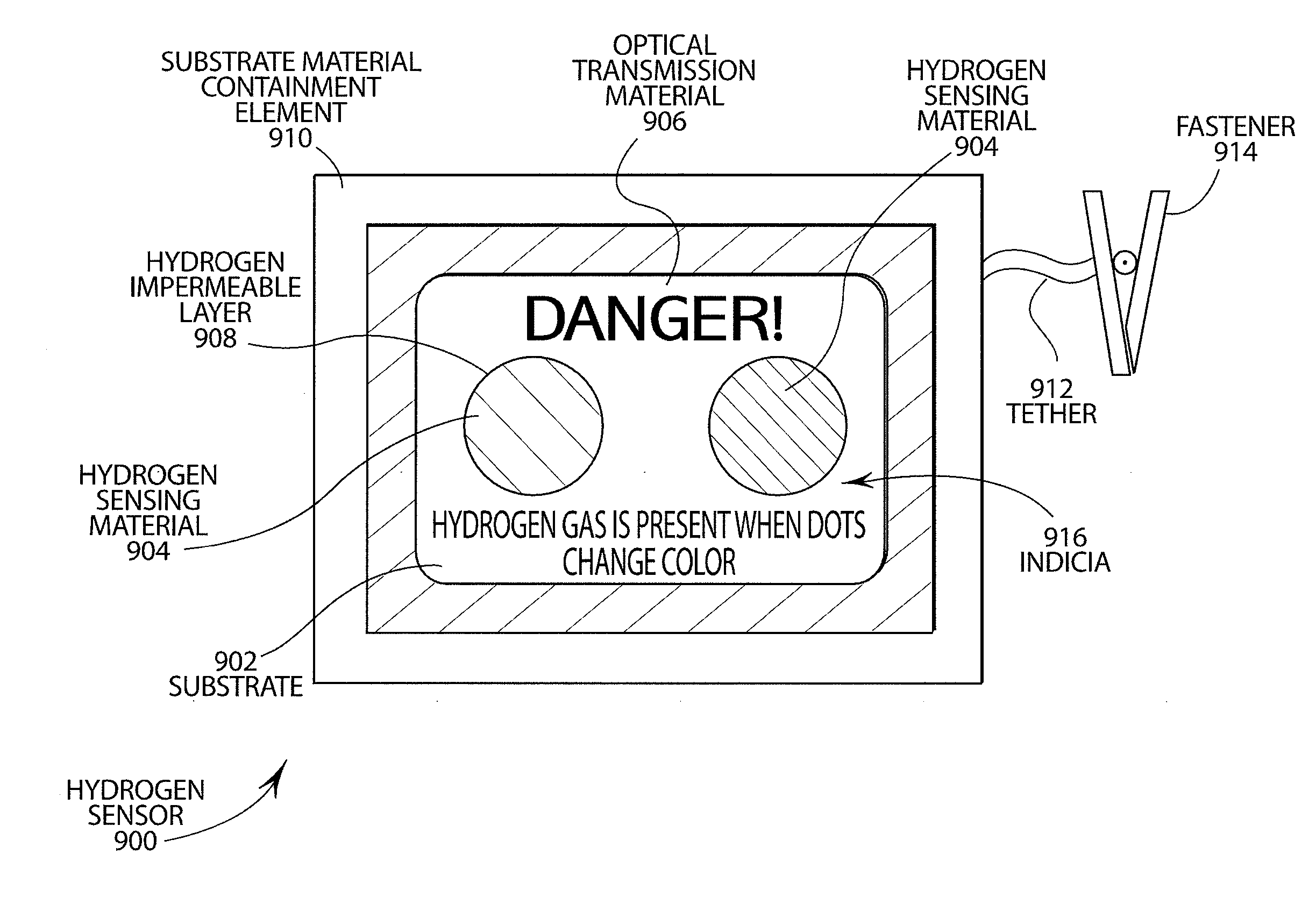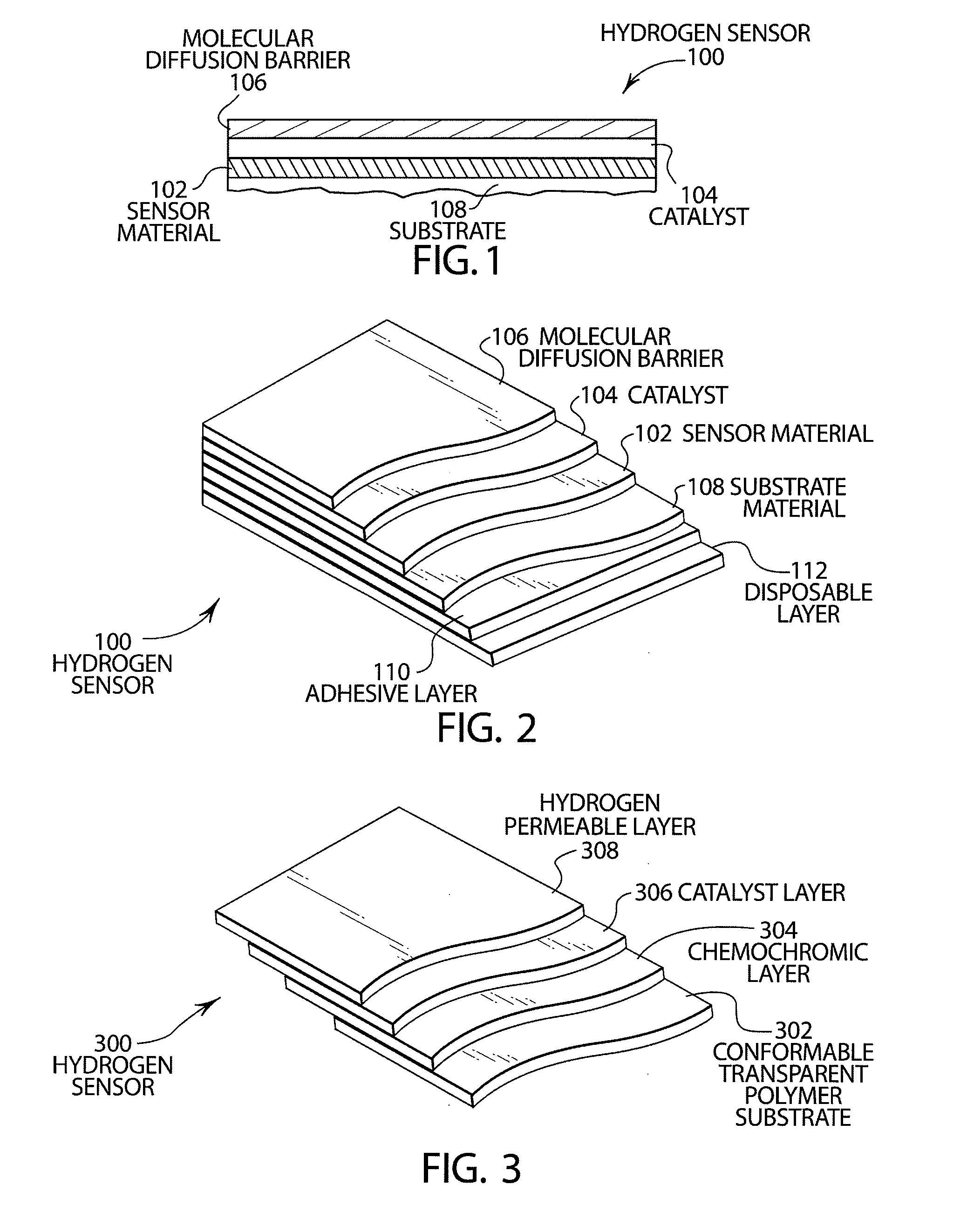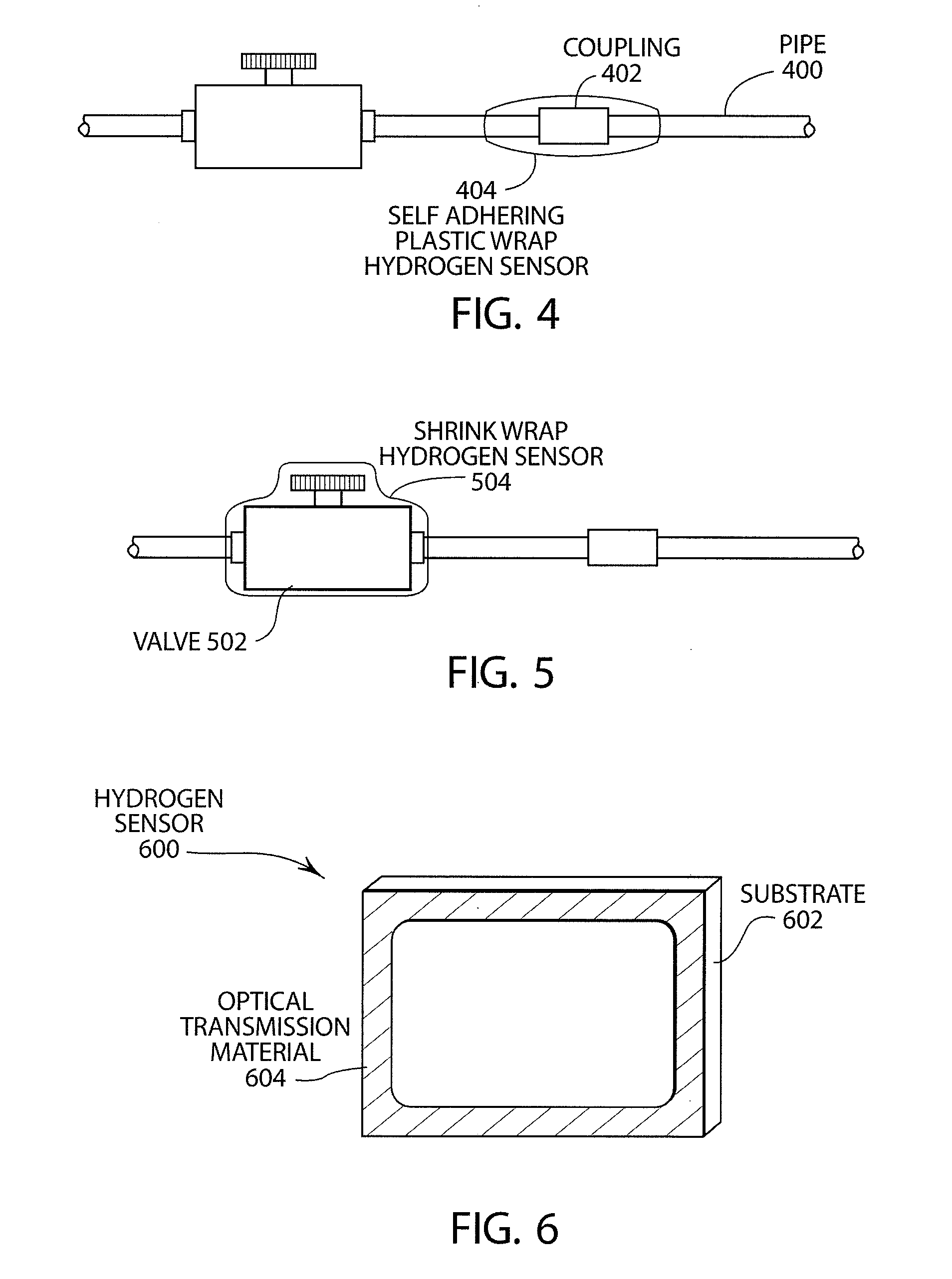Visual hydrogen sensors using nanoparticles
a hydrogen sensor and nanoparticle technology, applied in the direction of instruments, material electrochemical variables, analysis using chemical indicators, etc., can solve the problems of large electronic devices and bulky devices of detectors
- Summary
- Abstract
- Description
- Claims
- Application Information
AI Technical Summary
Problems solved by technology
Method used
Image
Examples
Embodiment Construction
[0027] In accordance with one embodiment, visual hydrogen sensors can be made using nanoparticles of chemochromic material, such as tungsten oxide (WO3), that are coated with a noble metal catalyst, such as platinum or palladium. Various other transition metals can be used with various catalysts, as disclosed below. The catalyst is required to generate a chemochromic reaction with hydrogen. When the tungsten oxide nanoparticles that have been impregnated with a catalyst (such as platinum) are exposed to hydrogen gas, the catalyst causes the hydrogen gas to dissociate into atomic hydrogen so that atomic hydrogen may migrate into the tungsten oxide nanoparticles. The atomic hydrogen then chemically combines with the tungsten oxide to cause the chemochromic reaction. The diffused atomic hydrogen reacts with the tungsten oxide at the interface between the catalyst, such as platinum, and the tungsten oxide. The resulting partially reduced oxide absorbs light in the red portion of the vis...
PUM
 Login to View More
Login to View More Abstract
Description
Claims
Application Information
 Login to View More
Login to View More - R&D
- Intellectual Property
- Life Sciences
- Materials
- Tech Scout
- Unparalleled Data Quality
- Higher Quality Content
- 60% Fewer Hallucinations
Browse by: Latest US Patents, China's latest patents, Technical Efficacy Thesaurus, Application Domain, Technology Topic, Popular Technical Reports.
© 2025 PatSnap. All rights reserved.Legal|Privacy policy|Modern Slavery Act Transparency Statement|Sitemap|About US| Contact US: help@patsnap.com



